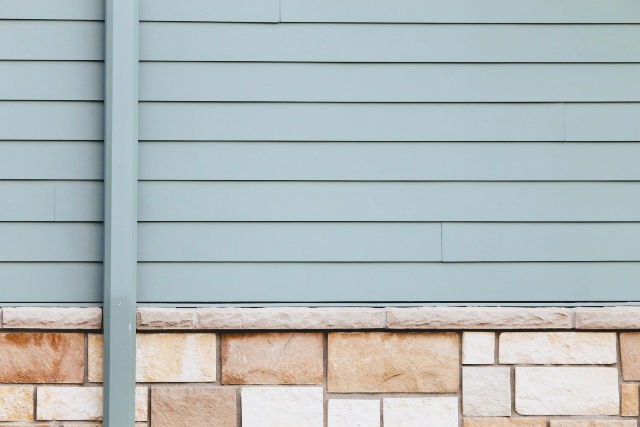There is more to siding than meets the eye. Finding a siding with the right aesthetic appeal that meets your budgetary needs is important. But the durability of your siding is also a matter worth considering. This guide is designed to assist you in making an informed decision on the best siding project for your home, bearing each of these factors in mind. It also provides some useful tips on how to care for homes with siding.
Types of Siding Materials
Let’s start by considering the different types of siding and their respective pros and cons. This will give you a better sense of which material is best suited for your home.
Wood Siding
Wood siding comes in a variety of forms, but each one will give your house a rustic, traditional look. Board and batten, shakes and wood shingles are among the most beautiful kinds of siding available. These are often selected by builders and homeowners aiming for that warm, inviting appeal that only wood can provide.
Wood siding is also reasonably durable; although, cedar tends to hold up better than pine against cracking and shrinking over time. Regardless of the wood you choose, it is important to have it treated with a protective finish. This will maximize the life of your siding.
Projects involving wood siding can be costly, so if you like the look of authentic wood but are on a tight budget, you might consider going with an engineered siding instead.
Engineered Siding
Engineered sidings are reasonably durable and combine the warm appeal of wood with a budget-friendly affordability. These wood-and-resin boards also provide a uniform look with no visible seams once installed. Engineered boards also come pre-treated with a moisture-resistant coating.
While the technology of engineered wood sidings has come a long way since its inception, these sidings can be susceptible to moisture damage over time. It is important to hire professionals to install the siding correctly, thereby maximizing its life and durability. Alternatively, for maximum durability, you might want to consider installing a vinyl siding.
Vinyl Siding
The beauty of vinyl is that it is as inexpensive as it is durable and relatively easy to install. This will appeal, not only to those looking for a product that will hold up against the worst of the elements with minimal maintenance, but also to those interested in maximizing their savings.
Vinyl comes in a variety of styles and patterns that resemble everything from wood to stone. Granted, it is still easy to tell the difference between vinyl and other types of material, so if you’re looking for a more authentic look, then vinyl might not be your siding of choice. However, if you want an affordable siding with its own sort of appeal, then vinyl might be the way to go.
Metal Siding
Aluminum is the most common form of metal siding. It provides the same uniform look as engineered wood and vinyl sidings and is less of a cost commitment upfront than either of them. Like vinyl, metal is also less susceptible than wood to damage caused by the elements over time.
That said, aluminum siding can dent and scratch, so it is best not to install it where it will be bumped into or hit by objects. Aluminum can be more costly than vinyl over time because of the maintenance it requires.
What Siding Material Lasts the Longest?
- Vinyl Siding: 60+ years
- Metal Siding: Up to 40 years
- Wood and Engineered Siding: 20-40 years
Tips to Maintaining Your Siding
- Power wash your siding once per year. Use a chemical cleaner on vinyl.
- Remove mildew from sidings with diluted bleach or hydrogen peroxide.
- Have damaged wood siding patched with new boards.
- Treat wood sidings with a protective finish, such as paint, varnish or clear coating every 2-5 years.
- Locate and treat scratches in your metal siding.
What Colour Siding Has the Best Resale Value?
A general rule of thumb is to go with light colours, neutrals, or white. These shades are the easiest to match with white trim and darker colours or black accents on the rest of the house (e.g. the front door).
If resale value of the home is your chief concern, it might be a good idea to stay away from bright colours, such as orange, purple, pink or pastels. As these hues are more difficult to match with others, they limit the range of colour schemes a potential homebuyer would be able to adopt.
Need Professional Guidance? Give Davidoff a Call Today.
Whether you are looking to install new siding on your home or have your existing siding treated or maintained, the roofing experts at Davidoff Roofing are here to help. Having served London and the surrounding area for 40 years, our passion is helping you find the right siding solution for your home.
